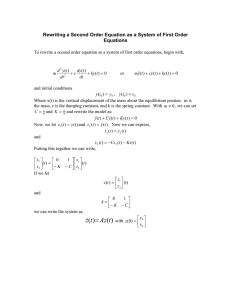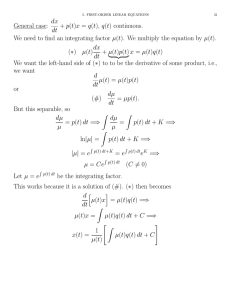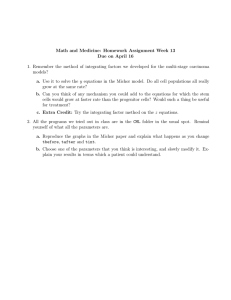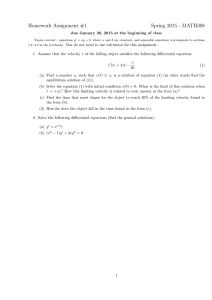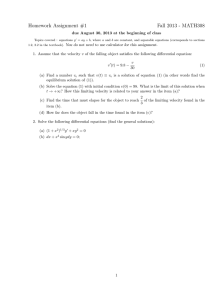Section 2.1 Linear Equations. Definition.
advertisement
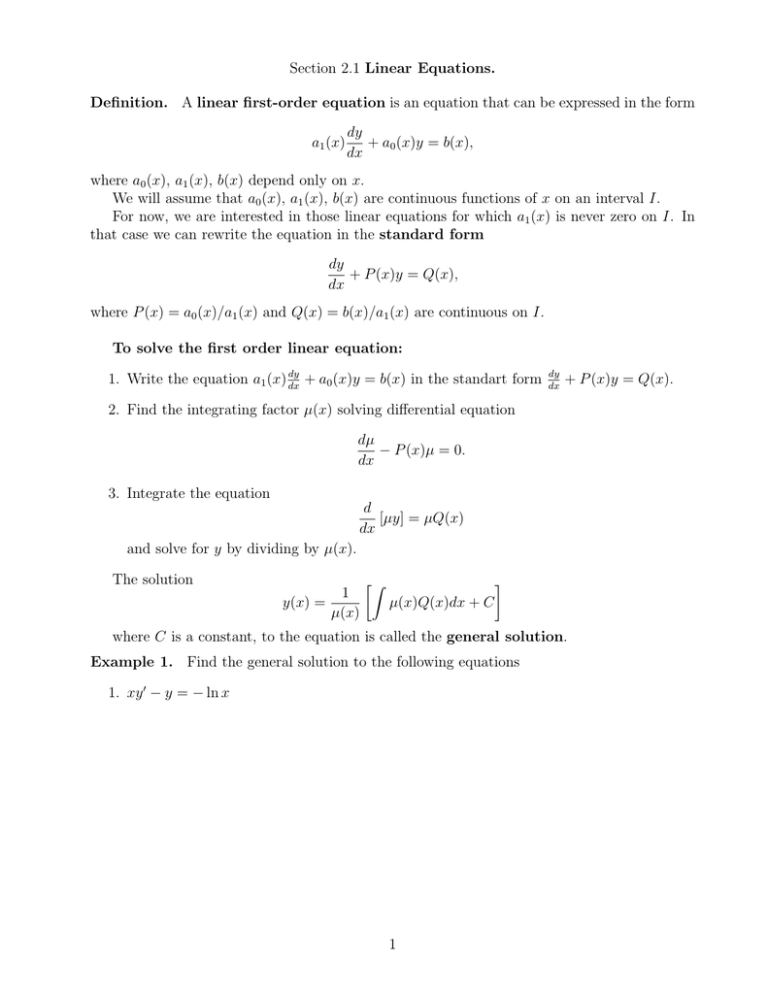
Section 2.1 Linear Equations. Definition. A linear first-order equation is an equation that can be expressed in the form a1 (x) dy + a0 (x)y = b(x), dx where a0 (x), a1 (x), b(x) depend only on x. We will assume that a0 (x), a1 (x), b(x) are continuous functions of x on an interval I. For now, we are interested in those linear equations for which a1 (x) is never zero on I. In that case we can rewrite the equation in the standard form dy + P (x)y = Q(x), dx where P (x) = a0 (x)/a1 (x) and Q(x) = b(x)/a1 (x) are continuous on I. To solve the first order linear equation: dy + a0 (x)y = b(x) in the standart form 1. Write the equation a1 (x) dx dy dx + P (x)y = Q(x). 2. Find the integrating factor µ(x) solving differential equation dµ − P (x)µ = 0. dx 3. Integrate the equation d [µy] = µQ(x) dx and solve for y by dividing by µ(x). The solution 1 y(x) = µ(x) Z µ(x)Q(x)dx + C where C is a constant, to the equation is called the general solution. Example 1. Find the general solution to the following equations 1. xy 0 − y = − ln x 1 2. y 0 − 2y = t2 e2t Example 2. Solve the initial value problem 1. dy − ydx − 2xex dx = 0, 2. ty 0 + 2y = t2 − t + 1, y(0) = e − 2 1 y(1) = , t > 0 2 2


